Description
A pressure O2 Regulator is a control valve that reduces the input pressure of a fluid to a desired value at its output. Regulators are used for gases and liquids, and can be an integral device with an output pressure setting, a restrictor and a sensor all in the one body, or consist of a separate pressure sensor, controller and flow valve.
A pressure O2 Regulator primary function is to match the flow of gas through the regulator to the demand for gas placed upon it, whilst maintaining a constant output pressure.
If the load flow decreases, then the regulator flow must decrease as well. If the load flow increases, then the regulator flow must increase in order to keep the controlled pressure from decreasing due to a shortage of gas in the pressure system.
A pressure O2 Regulator includes a restricting element, a loading element, and a measuring element:
- The restricting element is a valve that can provide a variable restriction to the flow, such as a globe valve, butterfly valve, poppet valve, etc.
- The loading element is a part that can apply the needed force to the restricting element. This loading can be provided by a weight, a spring, a piston actuator, or the diaphragm actuator in combination with a spring.
- The measuring element functions to determine when the inlet flow is equal to the outlet flow. The diaphragm itself is often used as a measuring element; it can serve as a combined element.
In the pictured single-stage O2 Regulator , a force balance is used on the diaphragm to control a poppet valve in order to regulate pressure. With no inlet pressure, the spring above the diaphragm pushes it down on the poppet valve, holding it open. Once inlet pressure is introduced, the open poppet allows flow to the diaphragm and pressure in the upper chamber increases, until the diaphragm is pushed upward against the spring, causing the poppet to reduce flow, finally stopping further increase of pressure. By adjusting the top screw, the downward pressure on the diaphragm can be increased, requiring more pressure in the upper chamber to maintain equilibrium. In this way, the outlet pressure of the regulator is controlled.
High pressure gas from the supply enters into the regulator through the inlet valve. The gas then enters the body of the regulator, which is controlled by the needle valve. The pressure rises, which pushes the diaphragm, closing the inlet valve to which it is attached, and preventing any more gas from entering the regulator.
The outlet side is fitted with a pressure gauge. As gas is drawn from the outlet side, the pressure inside the regulator body falls. The diaphragm is pushed back by the spring and the valve opens, letting more gas in from the supply until equilibrium is reached between the outlet pressure and the spring. The outlet pressure therefore depends on the spring force, which can be adjusted by means of an adjustment handle or knob.
The outlet pressure and the inlet pressure hold the diaphragm/poppet assembly in the closed position against the force of the large spring. If the supply pressure falls, it is as if the large spring compression is increased allowing more gas and higher pressure to build in the outlet chamber until an equilibrium pressure is reached. Thus, if the supply pressure falls, the outlet pressure will increase, provided the outlet pressure remains below the falling supply pressure.
This is the cause of end-of-tank dump where the supply is provided by a pressurized gas tank. With a single stage regulator, when the supply tank gets low, the lower inlet pressure causes the outlet pressure to climb. If the spring compression is not adjusted to compensate, the poppet can remain open and allow the tank to rapidly dump its remaining contents. In other words, the lower the supply pressure, the lower the pressure differential the regulator can achieve for a given spring setting.
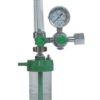

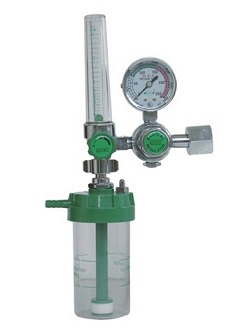
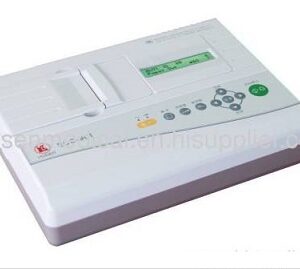
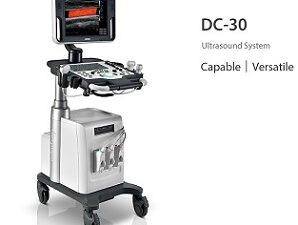

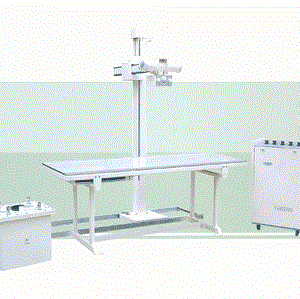

Reviews
There are no reviews yet.